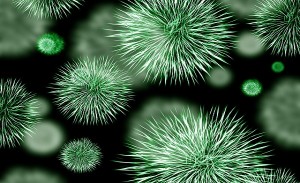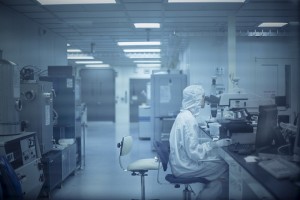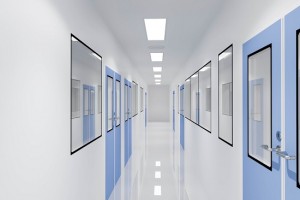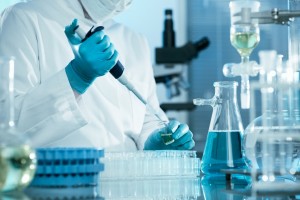Cleanrooms are designed to limit product exposure to airborne particulates, contaminants and pollutants. In medicine and biotechnology especially, these are necessary to control temperature and humidity, ensure that parts are not contaminated with foreign material, and free medical parts of bacteria, viruses or other pathogens.
What stages can you expect to find in a Rubber Manufacturing cleanroom, and what are best practices to keeping your cleanroom water as purified as possible? Let’s take a walk through one of our most important rooms in the building.
Understanding the Areas of a Certified Cleanroom
Area 1: Gowning
Typically a smaller area separate from the manufacturing area, this allows for personnel to put cleanroom approved garments over their typical everyday clothing (such as shoe, hair and beard covers). After assuring proper gowning procedures, personnel move into the manufacturing area. This takes place in the same purified air found throughout the room.
Area 2: Manufacturing
This is the main area where machines and personnel work. High Efficiency Particulate Air (HEPA) filter air is moved constantly throughout the room. Air flow and particulate counts are measured at document intervals. We currently have four injection molding machines for liquid silicone rubber (LSR) molding of medical FDA Class VI or ISO 10993 silicone. Contracted certifying companies can be used to certify these areas to a given standard. Apple Rubber’s cleanroom is certified to ISO Class 7 or FED STD 209E Class 10,000.
Area 2: Post Cure
This is a batch process, where parts are loaded into the ovens to assure solid airflow around the parts. Times vary, but four hours at 400°F is standard. Post-cure of the material may provide an improvement in the mechanical properties of the finished part (such as compression set). The content of volatile components may also be reduced. During postcuring, it is primarily siloxane that evaporates, leading to a slight loss of weight. It is recommended to maintain a supply of fresh air into the postcuring oven to prevent the formation of flammable air/ siloxane mixtures (100-130 liters of fresh air per minute per kg silicone rubber).
Not all silicones or applications require post curing. Many new grades of silicone are designed for use without post cure and still meet medical compatibility.
Area 3: Cleaning
In this area, various cleaning equipment is used – most importantly, the purity of the water used in the cleaning process. Manufactures work to assure that microbial are not introduced from fresh water sources, which requires deionized, reverse osmosis and UV-purified water. Continuous monitoring should be performed to verify incoming water and process water.
Area 4: Inspection/Packaging
Personnel in the inspection/packaging area look for defects or foreign material using defined AQL sampling. All packing is performed in the clean room to prevent contamination. Always use double-bag packaging so customers can remove the first bag before placing bags into their clean rooms.
The Stages of Cleaning
One of the most critical parts of a cleanroom is how the parts are cleaned. Ultrasonic or high turbulence cleaning system are commonly used. Apple Rubber uses an automatic ultrasonic cleaning system with the following stages. This is followed by the explanation of critical metering of the cleaning water.
Stage 1: Load Station
In this stage, parts are loosely loaded into wire mesh baskets (whose mesh dimensions vary, depending on the size of the part). The basket screen mesh is tight enough so parts will not fall out during the washing stage.
Stage 2: Wash Tank
This is an ultrasonic cascade overflow wash tank. This uses one percent Valtech SP2200 ultrasonic detergent and 99 percent purified water. Note: The normal operating cycle of this tank is 140°F for six minutes.
Filtration: Particulate filter cartridge, 0.45-micron.
Stage 3: Rinse Tank 1
This is an ultrasonic cascade overflow rinse tank. Rinse Tank 1 uses purified water that has been filtered from Rinse Tank 2. The operating cycle of this tank is 140°F for six minutes.
Filtration: Particulate filter cartridge, 0.45-micron.
Stage 4: Rinse Tank 2
Rinse Tank 2 is also an ultrasonic cascade overflow rinse tank. This uses purified water. The fresh purified water enters the tank continuously during the rinse cycles ensuring the final rinse takes place in the cleanest water. The operating cycle of this tank is 140°F for six minutes.
Stage 5: Dry Station
During this stage, heated air is filtered through a HEPA filter, which traps airborne particles as they pass through an air purifier. The heated air circulates from the bottom of the chamber up over the parts, and out through the holes at the top of the drying chamber. It is then reheated and passed through the HEPA filter for recirculation. Air circulation is at 1,000 (Standard Cubic Feet per Minute (SCFM).
Stage 6: Unload Station
During this stage, parts are unloaded from the basket and either packages for shipment or checked for further evaluation.
Measuring Total Organic Carbon
Total organic carbon, or TOC, is the amount of carbon found in an organic compound and is often used as an indicator of water quality or cleanliness. As we focus on purified water, we measure this in cleanrooms for two reasons:
1). TOC can be a source of food for bacteria. The lower the TOC level in a system, the less food will be available to sustain bacteria.
2). TOC is used to gauge the overall health of the water purification system. High TOC levels can point to clogged or malfunctioning filtration equipment or other possible contamination within the system.
Several standards are available for monitoring the maximum accepted level of TOC in water systems.
- The U.S. Pharmacopeial Convention (USP) water for injection limit is 500 parts per billion (ppb).
- ASTM D1193 type I and type II waters have a limit of 50 ppb.
Our TOC monitor is capable of displaying TOC levels for different intervals, including a 24-hour period. Typical levels are single digits (ppb).
Purified Water and Electrical Resistivity: Since most common water impurities ionize, the electrical resistivity of purified water can be a general gauge of its overall purity.
Generally, electricity flows easily through contaminated water. Conversely, pure water does not contain these contaminant ions, so it is more difficult for electricity to flow. For example: sea water with an electrical resistivity of 25 ohm cm conducts electrical current much more easily than pure water with an electrical resistivity of 18,200,000 ohm cm.
Several standards exist to measure the electrical resistivity of purified water. The USP water for injection has a minimum resistivity of 0.77 MΩ cm.
Purified Water Resistivity meter: The resistivity of purified water in this system is continuously monitored. Typical values are greater than 17 MΩ cm.
Many techniques are available to either kill bacteria in water or render them until they’re unable to reproduce. Regardless, after bacteria are killed, their carcasses still remain. Certain bacterial carcasses contain lipopolysaccharides (LPS), which are released after they die.
A component of this LPS, called Lipid A, is what causes an adverse response in humans. Lipid A is referred to as a pyrogen because it can cause a rise in body temperature if they are injected into the human body.
Pyrogens and Medical Parts
Purified water is an essential resource in all medical and hospital environments, since water is often the major component in many diverse applications. Pyrogens can become attached to medical parts during the cleaning stage if they are present in the wash water. The pyrogens could then detach from the medical devices during use and enter the human body, where they could potentially cause a fever in the patient.
Because of their harming effect on patient health, it is important to reduce pyrogen levels in wash water to limit possible contamination of medical parts.
Several standards set limits for pyrogen levels in water. The USP water for injection limit is 0.25 endotoxin units (EU) per milliliter (mL) of water. The ASTM D1193 Grade A and Grade B endotoxin limits are 0.03 EU/mL and 0.25 EU/mL, respectively.
Our water purification system is capable of producing non-pyrogenic water. Our specification limit is 0.25 EU/mL with associated action and alert limits. Endotoxin testing is conducted by sampling the product water and performing associated testing with an outside lab.
Certified Class 10,000 ISO 7 Cleanroom
Our in-house certified cleanroom facilities focus on meeting increased demands for cleanroom processing, medical LSR molding, heightened quality assurance and full lot traceability.
For more information on our cleanroom processes, check out our video or contact our engineers for assistance. Want to chat about cleanrooms? Connect with us on Twitter @AppleRubber.



